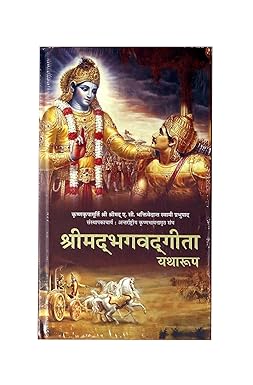परिचय
हिमाचल प्रदेश के कांगड़ा जिले में स्थित चामुंडा देवी मंदिर भारत के प्रमुख शक्तिपीठों में से एक है। पौराणिक मान्यता के अनुसार जब भगवान विष्णु ने अपने सुदर्शन चक्र से देवी सती के शरीर के 51 टुकड़े किए थे, तब उनका मुख (चेहरा) यहाँ गिरा था। इस कारण यह स्थान शक्तिपीठ कहलाया और यहाँ माता चामुंडा की पूजा होती है।
ऐतिहासिक और पौराणिक महत्व
चामुंडा देवी को देवी दुर्गा का उग्र स्वरूप माना जाता है। देवी महात्म्य के अनुसार, माता कौशिकी की भवें से चामुंडा का जन्म हुआ था, जिन्होंने चंड और मुण्ड नामक असुरों का वध किया। इस घटना से बुराई के अंत और धर्म की रक्षा का संदेश मिलता है।
यह मंदिर बनैर नदी के तट पर और धौलाधार पर्वतों के बीच स्थित है, जो वातावरण को अत्यंत दिव्य और पवित्र बनाता है।
मंदिर की विशेषताएँ
-
मंदिर में माता चामुंडा की प्रतिमा विराजमान है।
-
भक्त मानते हैं कि यहाँ आकर माँ उन्हें शक्ति, साहस और सुरक्षा प्रदान करती हैं।
-
नवरात्रि के अवसर पर यहाँ विशाल मेला लगता है और हजारों श्रद्धालु दर्शन के लिए आते हैं।
उत्सव और पूजा-पाठ
-
नवरात्रि सबसे बड़ा उत्सव है जिसे धूमधाम से मनाया जाता है।
-
रोजाना आरती, दुर्गा सप्तशती का पाठ और फूल-प्रसाद अर्पित करना यहाँ की परंपरा है।
निष्कर्ष
चामुंडा शक्तिपीठ केवल मंदिर ही नहीं बल्कि एक आध्यात्मिक शक्ति केंद्र है। यह हमें यह सिखाता है कि अच्छाई सदैव बुराई पर विजय प्राप्त करती है और माँ की कृपा से भक्त जीवन की कठिनाइयों का साहसपूर्वक सामना कर सकते हैं।
Overview of Chamunda Shaktipeeth
Location and Significance
Chamunda Shaktipeeth, located in Padar near Dharamshala in Kangra district, Himachal Pradesh, is believed to be the site where the face of Goddess Sati fell. It is one of the prominent temples in the region.
Historical Background
The temple is said to have been constructed around the 16th century. According to legend, a king and a priest prayed to Goddess Chamunda for her consent to shift the idol to a more accessible location, and the goddess appeared in a dream to guide them.
Deity Worshipped
The main deity worshipped at this Shaktipeeth is Goddess Chamunda, a fierce form of Goddess Durga. She is revered for her protective and benevolent qualities.
Mythological Significance
According to mythology, the face of Goddess Sati fell at this location during the cosmic dance of Lord Shiva, symbolizing the triumph of good over evil.
Importance in Shakti Peetha Tradition
As one of the five major Shakti temples in Himachal Pradesh, this temple holds immense spiritual significance for devotees seeking blessings and protection from the goddess.
Temple Architecture and Design
Temple Structure
The temple showcases traditional Himachali architecture with intricate carvings and a serene ambiance, reflecting the spiritual heritage of the region.
Deity Idol
The idol of Goddess Chamunda is sculpted with great artistry, depicting her in a majestic and protective posture, adorned with traditional ornaments.
Temple Premises
The temple premises are meticulously maintained, featuring lush greenery and sacred groves that enhance the spiritual experience of visitors.
Sacred Tank
Adjacent to the temple is the sacred Ban Ganga river, where devotees perform ritualistic ablutions, believed to purify the soul and body.
Temple Festivals
The temple hosts various festivals throughout the year, attracting devotees from all over the region to partake in the celebrations.
Temple Rituals and Worship
Daily Pujas
Daily pujas are conducted with devotion, involving offerings of flowers, fruits, and incense to seek the goddess's blessings.
Special Prayers
Devotees perform special prayers during auspicious occasions, seeking divine intervention for personal and communal well-being.
Temple Offerings
Common offerings include coconut, jaggery, and traditional sweets, symbolizing gratitude and devotion towards the goddess.
Temple Priests
The temple is managed by a group of dedicated priests who perform rituals with precision and ensure the sanctity of the temple is maintained.
Spiritual Significance
Engaging in temple rituals is believed to bring spiritual upliftment, mental peace, and divine protection to the devotees.
Festivals and Celebrations
Major Festivals
The temple celebrates major festivals like Navratri with grandeur, featuring processions, traditional music, and dance.
Devotee Participation
Devotees actively participate in the festivals, offering prayers, performing rituals, and engaging in community feasts.
Temple Decorations
During festivals, the temple is beautifully decorated with lights, flowers, and traditional motifs, creating a vibrant atmosphere.
Traditional Performances
Traditional art forms like Himachali dance and music are performed during festivals, adding cultural richness to the celebrations.
Community Involvement
The festivals foster a sense of community, bringing together people from various backgrounds to celebrate and uphold traditions.
Travel and Accessibility
Location Details
The temple is located in the village of Padar, approximately 19 km from Palampur town in Dharamshala Tehsil of Kangra district, Himachal Pradesh.
Nearest Railway Station
The nearest railway station is Kangra Railway Station, about 14 km from the temple, with narrow-gauge train services connecting to Pathankot.
Nearest Airport
The nearest airport is Kangra Airport (Gaggal Airport), approximately 25 km from the temple, with flights connecting to New Delhi and Chandigarh.
Local Transportation
Local transportation options include buses, taxis, and auto-rickshaws, making it convenient for visitors to reach the temple.
Accommodation Options
There are several accommodation options ranging from budget hotels to guesthouses in Palampur and Dharamshala, catering to the needs of pilgrims.
Chamunda Shaktipeeth, located in Padar near Dharamshala in Kangra district, Himachal Pradesh, is believed to be the site where the face of Goddess Sati fell. It is one of the prominent temples in the region.
The temple is said to have been constructed around the 16th century. According to legend, a king and a priest prayed to Goddess Chamunda for her consent to shift the idol to a more accessible location, and the goddess appeared in a dream to guide them.
The main deity worshipped at this Shaktipeeth is Goddess Chamunda, a fierce form of Goddess Durga. She is revered for her protective and benevolent qualities.
According to mythology, the face of Goddess Sati fell at this location during the cosmic dance of Lord Shiva, symbolizing the triumph of good over evil.
As one of the five major Shakti temples in Himachal Pradesh, this temple holds immense spiritual significance for devotees seeking blessings and protection from the goddess.
The temple showcases traditional Himachali architecture with intricate carvings and a serene ambiance, reflecting the spiritual heritage of the region.
The idol of Goddess Chamunda is sculpted with great artistry, depicting her in a majestic and protective posture, adorned with traditional ornaments.
The temple premises are meticulously maintained, featuring lush greenery and sacred groves that enhance the spiritual experience of visitors.
Adjacent to the temple is the sacred Ban Ganga river, where devotees perform ritualistic ablutions, believed to purify the soul and body.
The temple hosts various festivals throughout the year, attracting devotees from all over the region to partake in the celebrations.
Daily pujas are conducted with devotion, involving offerings of flowers, fruits, and incense to seek the goddess's blessings.
Devotees perform special prayers during auspicious occasions, seeking divine intervention for personal and communal well-being.
Common offerings include coconut, jaggery, and traditional sweets, symbolizing gratitude and devotion towards the goddess.
The temple is managed by a group of dedicated priests who perform rituals with precision and ensure the sanctity of the temple is maintained.
Engaging in temple rituals is believed to bring spiritual upliftment, mental peace, and divine protection to the devotees.
The temple celebrates major festivals like Navratri with grandeur, featuring processions, traditional music, and dance.
Devotees actively participate in the festivals, offering prayers, performing rituals, and engaging in community feasts.
During festivals, the temple is beautifully decorated with lights, flowers, and traditional motifs, creating a vibrant atmosphere.
Traditional art forms like Himachali dance and music are performed during festivals, adding cultural richness to the celebrations.
The festivals foster a sense of community, bringing together people from various backgrounds to celebrate and uphold traditions.
The temple is located in the village of Padar, approximately 19 km from Palampur town in Dharamshala Tehsil of Kangra district, Himachal Pradesh.
The nearest railway station is Kangra Railway Station, about 14 km from the temple, with narrow-gauge train services connecting to Pathankot.
The nearest airport is Kangra Airport (Gaggal Airport), approximately 25 km from the temple, with flights connecting to New Delhi and Chandigarh.
Local transportation options include buses, taxis, and auto-rickshaws, making it convenient for visitors to reach the temple.
There are several accommodation options ranging from budget hotels to guesthouses in Palampur and Dharamshala, catering to the needs of pilgrims.


